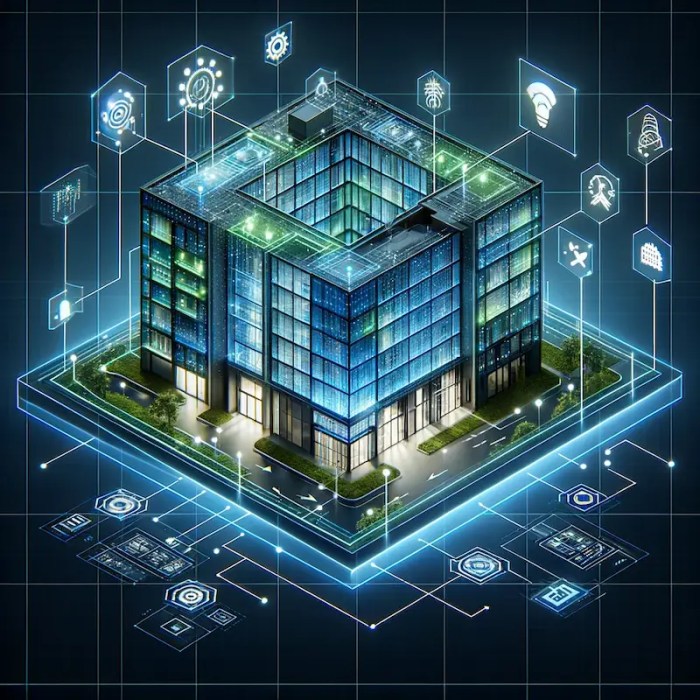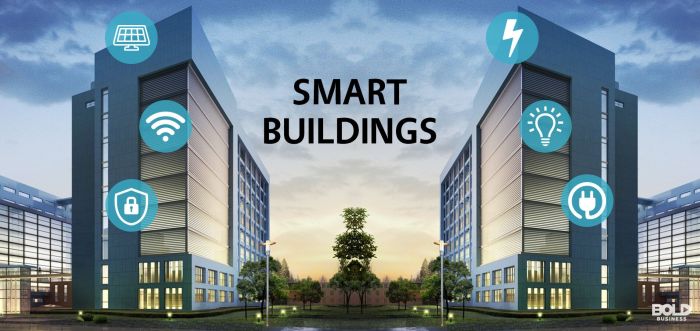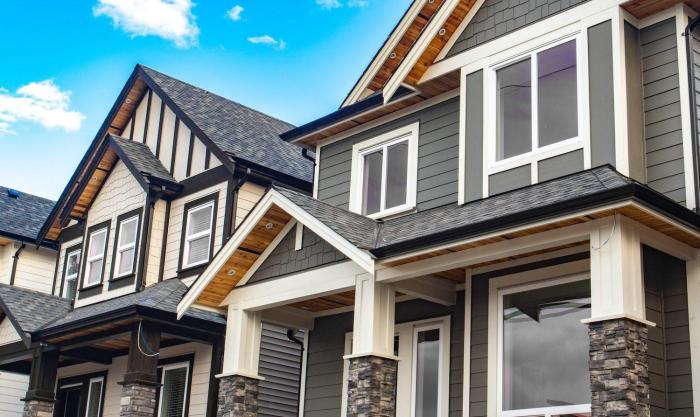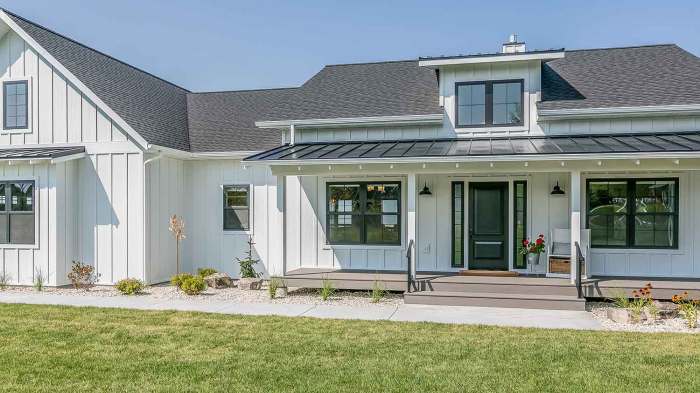Business investment opportunities in smart buildings: A Lucrative Venture for Forward-Thinking Investors
Exploring the realm of Business investment opportunities in smart buildings, this introduction sets the stage for a deep dive into the lucrative potential of these modern structures. From cutting-edge technologies to revolutionary concepts, this topic promises to unveil a world of innovation and profitability for savvy investors.
As we delve further, a comprehensive analysis of market trends, investment strategies, and technological integration will shed light on the exciting possibilities that await in the realm of smart buildings.
Overview of Smart Buildings for Business Investment
Smart buildings are revolutionizing the way businesses operate by incorporating advanced technologies to enhance efficiency, sustainability, and overall performance. These buildings are equipped with various interconnected systems that enable automation, data collection, and remote monitoring, ultimately optimizing the use of resources and improving the user experience.
Key Features and Technologies of Smart Buildings
- Integrated Building Management Systems (BMS): Centralized platforms that control and monitor various building functions such as HVAC, lighting, security, and energy management.
- IoT Sensors: Devices that collect data on occupancy, temperature, air quality, and energy usage to provide real-time insights for better decision-making.
- Energy-efficient Solutions: Smart buildings utilize energy-saving technologies like LED lighting, smart thermostats, and automated shading systems to reduce operational costs and environmental impact.
- Data Analytics: Advanced analytics tools process the data collected from sensors to identify patterns, trends, and opportunities for optimization within the building.
Benefits of Investing in Smart Buildings for Businesses
- Cost Savings: By optimizing energy usage and maintenance schedules, businesses can significantly reduce operational costs and improve their bottom line.
- Enhanced Productivity: Smart buildings provide a comfortable and efficient working environment, boosting employee productivity and satisfaction.
- Sustainability: Investing in smart buildings demonstrates a commitment to sustainability and environmental responsibility, which can enhance a company's reputation and attract eco-conscious customers.
- Future-proofing: With rapid advancements in technology, smart buildings offer scalability and flexibility to adapt to changing business needs and technological innovations.
Market Trends and Opportunities
Smart buildings are rapidly gaining popularity in the real estate market due to the increasing demand for sustainable and energy-efficient infrastructure. Investors are taking notice of this trend and exploring numerous opportunities in this sector.
Current Market Trends
One of the key trends in the smart building market is the integration of IoT technology to enhance building automation systems. This allows for real-time monitoring and control of various building functions, leading to improved efficiency and cost savings.
Another trend is the focus on occupant experience and wellness, with smart buildings incorporating features such as indoor air quality monitoring, lighting controls, and personalized comfort settings. This trend is driven by the growing awareness of the impact of indoor environments on health and productivity.
Growth Opportunities in the Sector
- Increased demand for green buildings: With a greater emphasis on sustainability, there is a growing demand for smart buildings that are energy-efficient and environmentally friendly.
- Rise of smart cities: As cities become more connected, the demand for smart infrastructure, including smart buildings, is expected to increase significantly.
- Expansion of IoT technology: The continuous advancement of IoT technology opens up new possibilities for smart building solutions, creating opportunities for innovation and growth in the sector.
Competitive Landscape and Challenges
The smart building market is becoming increasingly competitive, with a growing number of companies offering solutions and services in this space. This competition can lead to challenges such as price wars and the need for differentiation through unique value propositions.
Additionally, one of the challenges faced by investors in the smart building sector is the complexity of integrating various systems and technologies to create a unified smart building ecosystem. This requires expertise and resources to overcome potential integration issues.
Investment Strategies in Smart Buildings

Investing in smart buildings can offer businesses a range of opportunities to improve efficiency, reduce costs, and enhance sustainability
Different Investment Strategies
- Implementing energy-efficient systems: Investing in smart technologies such as IoT sensors, automated lighting, and HVAC systems can help reduce energy consumption and operating costs.
- Upgrading to smart security systems: Enhancing security with smart access control systems, surveillance cameras, and alarm systems can provide a safer environment for tenants and visitors.
- Integrating smart building management platforms: Utilizing centralized platforms for monitoring and controlling building operations can streamline maintenance, improve occupant comfort, and optimize resource usage.
Comparing ROI of Smart Buildings vs. Traditional Investments
Smart buildings typically have a higher upfront investment cost compared to traditional buildings. However, the potential for long-term savings on energy bills, maintenance expenses, and increased property value can result in a higher ROI over time.
Risk Factors and Mitigation Strategies
- Technology Risks: Rapid advancements in technology may lead to the obsolescence of current systems. To mitigate this risk, businesses should invest in scalable and flexible solutions that can adapt to future innovations.
- Data Security Risks: Smart buildings collect and store a vast amount of data, making them vulnerable to cyber threats. Implementing robust cybersecurity measures, regular audits, and employee training can help mitigate data security risks.
- Regulatory Risks: Compliance with changing building codes, environmental regulations, and data privacy laws can pose risks to smart building investments. Staying informed about regulatory changes and working with legal experts can help businesses navigate these challenges.
Technology Integration and Innovation

In the realm of smart buildings, technology integration and innovation play a crucial role in enhancing efficiency, productivity, and sustainability. By leveraging emerging technologies such as IoT, AI, and data analytics, businesses can transform their buildings into intelligent ecosystems that adapt to the needs of occupants and optimize operations.
Successful Technology Integration in Smart Buildings
- IoT sensors can collect real-time data on occupancy, energy usage, and environmental conditions to optimize heating, cooling, and lighting systems automatically.
- AI algorithms can analyze data to predict maintenance needs, detect anomalies, and optimize space utilization, leading to cost savings and improved building performance.
- Data analytics tools can provide actionable insights into building operations, enabling informed decision-making and continuous improvement strategies.
Importance of Innovation in Smart Buildings
Innovation is key to staying competitive in the rapidly evolving landscape of smart buildings. By embracing new technologies and staying updated with the latest advancements, businesses can unlock new opportunities for efficiency gains, cost savings, and enhanced user experiences. It is essential to foster a culture of innovation and collaboration to drive continuous improvement and ensure the long-term success of smart building investments.
Closing Notes
In conclusion, Business investment opportunities in smart buildings offer a promising landscape for those seeking to capitalize on the future of real estate. With a blend of strategic investments, technological advancements, and forward-thinking approaches, businesses can pave the way for success in this dynamic sector.
Commonly Asked Questions
What are some common challenges faced when investing in smart buildings?
Some common challenges include high initial costs of technology integration, security concerns related to data privacy, and the need for specialized expertise in managing smart building systems.
How can businesses mitigate the risks associated with investing in smart buildings?
Businesses can mitigate risks by conducting thorough due diligence, partnering with experienced smart building developers, implementing robust cybersecurity measures, and staying informed about industry standards and best practices.
What are the key technologies that drive innovation in smart buildings?
Key technologies include Internet of Things (IoT) for connectivity, Artificial Intelligence (AI) for predictive analytics, and data analytics for optimizing building performance and energy efficiency.



